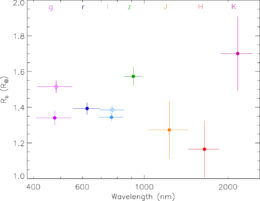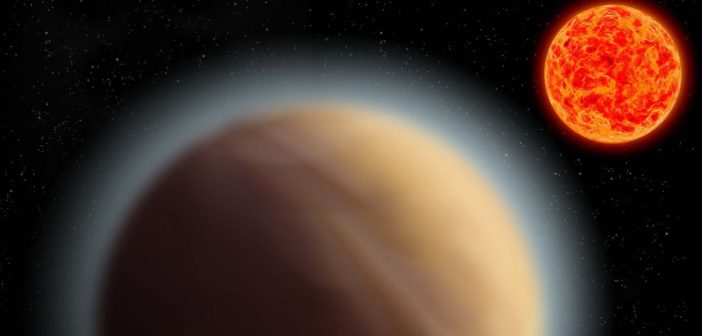Editor’s note: In these last two weeks of 2017, we’ll be looking at a few selections that we haven’t yet discussed on AAS Nova from among the most-downloaded papers published in AAS journals this year. The usual posting schedule will resume in January.
Detection of the Atmosphere of the 1.6 M ⊕ Exoplanet GJ 1132 b
Published March 2017
Main takeaway:
An atmosphere was detected around the roughly Earth-size exoplanet GJ 1132 b using a telescope at the European Southern Observatory in Chile. A team of scientists led by John Southworth (Keele University) found features indicating the presence of an atmosphere in the observations of this 1.6-Earth-mass planet as it transits an M-dwarf host star. This is the lowest-mass planet with a detected atmosphere thus far.
Why it’s interesting:
M dwarfs are among the most common stars in our galaxy, and we’ve found many Earth-size exoplanets in or near the habitable zones around M-dwarf hosts. But M dwarfs are also more magnetically active than stars like our Sun, suggesting that the planets in M-dwarf habitable zones may not be able to support life due to stellar activity eroding their atmospheres. The detection of an atmosphere around GJ 1132 b suggests that some planets orbiting M dwarfs are able to retain their atmospheres — which means that these planets may be an interesting place to search for life after all.
How the atmosphere was detected:

The measured planetary radius for GJ 1132 b as a function of the wavelength used to observe it. [Southworth et al. 2017]
Citation
John Southworth et al 2017 AJ 153 191. doi:10.3847/1538-3881/aa6477

